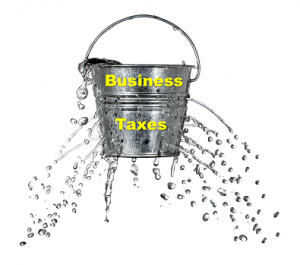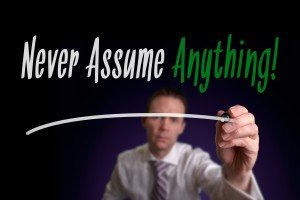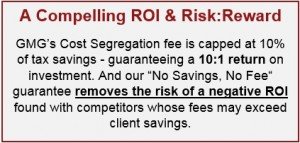Your Missing Cash Flow Link
Is Uncle Sam Your Biggest Collection Problem?
Conventional wisdom among business consultants, advisors, and accountants about managing your business cash flow to preserve working capital is that there are three primary things you can do to improve your cash position…
-
-
-
- Sell excess inventory,
- Accelerate collections, and
- Delay making payments.
-
-
These all make perfect sense – except for their omission of what could very well produce the biggest near-term cash flow benefit…
Reduce Wasteful Spending
Even manufacturing businesses that excel at lean manufacturing practices that have reclaimed global leadership for America’s manufacturing industry fail to apply the same precision to their cash flow needs, including their taxes.
Even the IRS is telling us that most businesses are paying more in taxes than they’re required to pay.
So before you go running to the bank – or worse – make sure first that you don’t have a collection problem with Uncle Sam.
If you do – meaning if you’re over-paying your taxes like most businesses inadvertently are – then stepping up your collection efforts with the government may prove far better for your bottom line than any other collection effort available to you. And very likely faster as well.
Are You Falling Through The Cracks?
Too many businesses are inadvertently giving all levels of government interest-free loans by overpaying their taxes.
Others are missing out on tax credits that could improve their competitive success. Knowing the government will subsidize some of your work on a potential project permits you to bid more aggressively and win more projects.
The reason these financial oversights are so prevalent is the government imposes some tough requirements to recover these over-payments and to qualify for other tax incentives.
And while those requirements have been substantially loosened over the years, they still require technical expertise – like engineering and intellectual property law – that most accounting firms simply don’t have.
So many small and mid-size businesses fall through the cracks between the required professional disciplines – and it’s costing them plenty by eroding the working capital they need to grow their businesses. This means there are lost opportunity costs in addition to the more obvious cash flow impacts.
Most business owners and managers understand at an intellectual level that they’re probably paying more than they should in taxes – and bitterly complain about it at a visceral level. But most don’t seem to realize they can do more than complain about it.
They can fix it.
They can stop over-paying their taxes.
And so can you.
Don’t Assume…
My first real boss owned the furniture business I worked for in high school and college – first lugging furniture, then selling it. He taught me early on to “never assume” because, well, you know…
And when you assume you’re A-OK with your taxes because you’re accountant takes care of that for you, you may be overlooking the most potent cash flow help available to you.
We find small and mid-size businesses are sitting on an average of $240,000 in untapped working capital in the form of unclaimed tax refunds and credits.
And it’s unclaimed because they’ve been assuming they don’t qualify for tax refunds and “R&D” tax credits – a misnomer that perpetuates this costly misconception – because they’re not high-tech enough or aren’t producing industry breakthroughs.
They don’t need to – and neither do you.
If you’re like them, that’s a high price to pay for assuming.
Don’t Assume, Find Out
According to a recent survey of small and mid-size businesses, many business owners suspect their accountants could do more to reduce their taxes.
The problem is their accountants often don’t have the non-accounting expertise the government requires to successfully reduce a business’ tax burden.
Correctly accelerating building depreciation, for example, requires an engineering study to separate non-structural building components – like carpeting and cabinetry, plumbing and partitions, landscaping and hardscaping – from its longer-lasting structural components.
Failing to conduct such a study – and the vast majority of US businesses are failing to do them – means everything in your building(s) is being depreciated over 39 years (27.5 for residential).
You’ll need to replace the non-structural items much sooner than that, of course – long before you’ve fully depreciated them. The net effect of this is that you’re not claiming your true costs for 20-40% of your building(s) – it varies with the type of building.
This means your taxable income is overstated and – as Uncle Sam reminds – you’re probably paying more in taxes than you’re legally required to pay.
Likewise, stop assuming your business doesn’t qualify for incentive tax credits. If you design, manufacturer, or construct physical or digital products, the processes you employ, and improve, to remain competitive are considered innovative even if they’re already in broad commercial use.
As long as they’re new to you – not to the industry – some portion of your payroll, supply, and contracted costs may be eligible for tax credits that reduce your tax bill dollar-for-dollar. That means every penny falls to your bottom line.
Think about how many millions in sales you’d need to generate the $240,000 in profits we see on average in tax savings.
Retroactive Savings
In both examples, you may be able to recover prior over-payments or overlooked credits for a substantial lump sum cash inflow well into the six figures or more – and often in six weeks or less.
But the vast majority of eligible businesses – up to 95% according to those most active in the field – let their erroneous assumption that their business isn’t  eligible prevent them from conducting the studies required to find out and to claim credits and refunds they’ve already earned.
eligible prevent them from conducting the studies required to find out and to claim credits and refunds they’ve already earned.
Stop doing that, too.
The Third Leg’s Local
The third leg of this tax-savings boost to cash flow is your local property taxes. Most business owners believe they’re paying too much in property taxes due to inflated valuations in their tax assessments.
And they’re usually right.
But you have to prove it. And again this requires a highly specialized study to justify – with detailed data to back it up – a property tax reduction and possibly a refund of past over-payments.
Our experience with clients over the past decade is that they’re over-paying property taxes to the tune of 15-20%. So it’s reasonable to expect your business may be able to cut this tax and improve cash flow accordingly.
But wait…
Don’t all these studies with engineers, intellectual property lawyers and other specialists they require cost an-arm-and-a-leg? How is that helping your cash flow challenge, you ask?
Well, it isn’t – if you do it the conventional way.
But if you choose instead to partner with GMG – a national provider with a strong and ethical record of success – you eliminate this risk and essentially guarantee a positive ROI. That’s because GMG assumes the financial risk if the savings found aren’t enough to cover the study costs in return for sharing in whatever cost savings are found.
The cost segregation studies that support accelerated building depreciation, for example, can be expected to average a 10:1 ROI (GMG’s fee is capped at 10% of savings for this service).
But about 30% of the time, the savings found aren’t enough to cover study costs – so that impressive ROI has a 30% risk of being a negative ROI when you’re required to pay study costs up-front whether sufficient savings are found or not. This is how these services are generally offered.
Not with GMG, however. If no savings are found – or insufficient savings are found to cover study costs – there’s no fee.
No Savings, No Fee
That makes it a risk-free 10:1 ROI – an unheard of return.
And if you turn out to be one of the 30% with insufficient savings for that service, you may still prove eligible for one or more of the other tax savings opportunities in R&D credits, energy credits, or property tax reduction.
Your worst case scenario is there aren’t enough savings among all of them – and even then you’d have the reassurance that you’re not paying (much) more than you have to in taxes.
And you’d pay nothing for that reassurance – and your superiors, whether bosses or shareholders, would also be reassured you’re not asleep at the switch and are a good steward of their business assets.
In the more likely scenario that you’re among the 70% who do see sufficient savings, you’ll have turned what might have been a negative ROI with the conventional approach of up-front costs into a guaranteed positive ROI with zero risk.
Where else can you get these kinds of returns with no risk?
The only question remaining is why wouldn’t you want to explore such a compelling opportunity?
It just makes good business sense.
For a free and instant estimate of your potential tax savings, click the orange button below…

